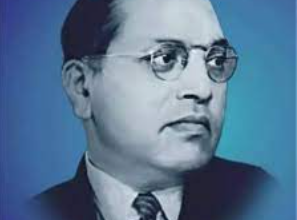भारताचे स्वातंत्र्य चीरायु होवो!

जयवंत हिरे
भारताचा ७८ वा स्वातंत्र्य दिन आपण सारे जल्लोषात साजरा करत असतांना इंग्रजांच्या गुलामीतुन सुटका इतकाच त्याचा अर्थ आहे काय?
नाही.
खरे तर स्वातंत्र्याचा खरा अर्थ, इथल्या जुलमी पेशवाई पासुन ते छोट्याछोट्या जुलमी राजांपर्यंतच्या जुलमांपासुन जनतेला मिळालेले स्वातंत्र्य होय.
या छोट्या छोट्या राजांच्या लढाया सातत्याने चालु असतं.ते प्रजेचे शोषण करीत.एकमेकांना संपवण्यासाठी ते परकियांना मदत करीत.त्यांच्याशी नाती जोडत.
परंतु इंग्रजी सत्तेमुळे या राजांपासुन,इथल्या धर्म-जाती शोषणापासुन सामान्य माणसाला मुक्ती मिळू लागली होती.त्यांना ज्ञानाची-शिक्षणाची कवाडे उघडी होऊ लागली.
इंग्रजांच्या पारतंत्र्यातुन स्वातंत्र्य मिळत असतानाच इथल्या विविध राजसत्ताही बरखास्त होऊन भारत देश प्रथमत:च एक सार्वभौम राष्र्ट म्हणून अस्तित्वात आले.त्यामुळेच स्वातंत्र्य दिन साजरा करतांना मोठ्या प्रयासाने प्राप्त झालेले भारताचे हे एक राष्टियत्व-सार्वभौमत्व टीकवण्याची, वृद्धींगत करण्याची आपली संर्वांचीच जबाबदारी आहे.
भारताच्या धर्म निरपेक्ष लोकशाहीचे धर्मांध झूंडी,सत्तालालसा आणि भांडवली शोषण व्यवस्थेपासून रक्षण करणे आपली साय्रांचीच कर्तव्य आणि जबाबदारी आहे ना?
मग, आपण भारताचे धर्मांध झूंडी,भांडवली शोषण व्यवस्था आणि सत्ता लालसे पासून रक्षण करण्यात अपयशी तर होत नाही ना?
ते करण्यात आपण यशस्वी झालो;तरच आपण परकीय आक्रमणांपासूनही आपल्या देशाच्या स्वातंत्र्याचे रक्षण करू शकू.
आपल्या भारतीय स्वातंत्र्याच्या आपणा साय्रांना शुभेच्छा!
संपूर्ण महाराष्ट्रातील घडामोडी व ताज्या बातम्या तसेच जॉब्स/शैक्षणिक/ चालू घडामोडीवरील वैचारिक लेख त्वरित जाणून घेण्यासाठी आमच्या व्हाट्सअँप चॅनलला Free जॉईन होण्यासाठी या लिंकला क्लीक करा

तसेच खालील वेबसाईटवर Click करा
दैनिक जागृत भारत



